- Tips for Planting Exibishen Onion Seedlings in the Ground
- 1. Choose the Right Planting Location
- 2. Prepare the Soil
- 3. Plant at the Right Time
- 4. Dig Planting Holes
- 5. Plant the Seedlings
- 6. Water Properly
- 7. Mulch the Soil
- 8. Provide Regular Care
- 9. Harvesting
- 10. Storing
- Preparing the Soil
- 1. Choose a well-draining site:
- 2. Clear the area:
- 3. Test the soil:
- 4. Add organic matter:
- 5. Break up soil clumps:
- 6. Apply fertilizer:
- 7. Water the soil:
- 8. Create furrows or raised beds:
- 9. Space the seedlings:
- Choosing the Right Location
- Timing
- Preparing the Seedlings
- Planting Method
- Spacing
- Watering and Mulching
- Aftercare and Maintenance
- “Question-Answer”
- When is the best time to plant Exibishen onion seedlings in the ground?
- What kind of soil is best for planting Exibishen onion seedlings?
- How deep should I plant the Exibishen onion seedlings?
- How much water do Exibishen onion seedlings need?
- How far apart should I space the Exibishen onion seedlings?
- “Video” Large Onions WITHOUT Synthetic Fertilizer: How I Grew Using Organic Methods (+3 side by side tests)
Growing Exibishen onions from seedlings can be a rewarding experience for any gardener. These onion varieties are known for their large size and sweet flavor, making them a popular choice for home vegetable gardens. However, successfully planting Exibishen onion seedlings in the ground requires careful preparation and attention to detail.
First, it’s important to choose a location with well-draining soil and full sun. Exibishen onions thrive in loose, fertile soil that is rich in organic matter. Before planting, it’s a good idea to amend the soil with compost or well-rotted manure to improve its fertility and drainage.
Next, carefully transplant the seedlings into the ground, making sure to space them about 4-6 inches apart. It’s important to handle the seedlings gently, as their roots are delicate and can be easily damaged. Dig a small hole for each seedling and place it in the hole, making sure that the top of the bulb is level with the soil surface.
After planting, water the seedlings thoroughly to help settle the soil and encourage root growth. It’s important to keep the soil evenly moist, but not waterlogged, as excessive moisture can lead to root rot. Mulching around the seedlings can help conserve moisture and suppress weeds.
In conclusion, planting Exibishen onion seedlings in the ground requires careful preparation and attention to detail. By choosing the right location, amending the soil, transplanting the seedlings carefully, and providing proper moisture, you can ensure the success of your Exibishen onion crop. Enjoy the process and look forward to a bountiful harvest of sweet and flavorful onions!
Tips for Planting Exibishen Onion Seedlings in the Ground
Planting exibishen onion seedlings in the ground requires proper preparation and care. Here are some tips to ensure successful planting:
1. Choose the Right Planting Location
Select a sunny spot in your garden with well-draining soil. Onions thrive in full sun and require soil that is loose and fertile.
2. Prepare the Soil

Before planting, loosen the soil using a garden fork or tiller. Remove any rocks, debris, or clumps of grass. Add compost or well-rotted manure to improve soil fertility and drainage.
3. Plant at the Right Time
Exibishen onion seedlings can be planted in early spring, after the danger of frost has passed. The soil temperature should be around 50°F (10°C) for optimal growth.
4. Dig Planting Holes

Using a trowel or your fingers, create planting holes that are approximately 1 inch (2.5 cm) deep and 4 inches (10 cm) apart. Space rows about 12 inches (30 cm) apart.
5. Plant the Seedlings
Gently remove the seedlings from their containers, being careful not to damage the roots. Place each seedling in a planting hole and firm the soil around it.
6. Water Properly
After planting, water the seedlings thoroughly to settle the soil and ensure good root-to-soil contact. Keep the soil evenly moist, but avoid overwatering, as this can cause rotting.
7. Mulch the Soil
Apply a layer of organic mulch, such as straw or shredded leaves, around the base of the seedlings. This helps conserve moisture, suppress weeds, and regulate soil temperature.
8. Provide Regular Care
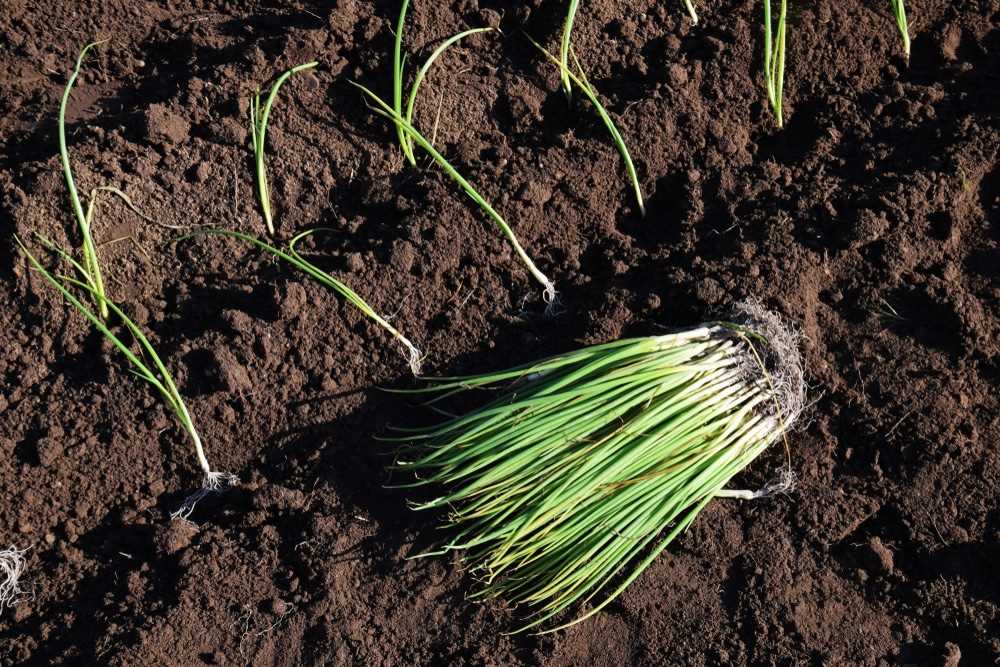
Keep the area around the onions free of weeds, as they can compete for nutrients and water. Fertilize the plants every few weeks with a balanced fertilizer to encourage healthy growth.
9. Harvesting

Exibishen onions are typically ready to harvest when the tops turn yellow and start to fall over. Gently dig them out using a fork, being careful not to bruise or damage the bulbs.
10. Storing
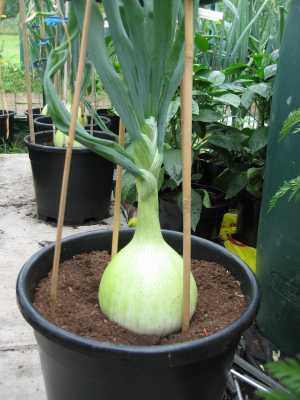
After harvesting, cure the onions in a cool, dry place with good ventilation. Once dry, remove any remaining soil and store the onions in a cool, dark area with low humidity.
Following these tips will help you successfully plant exibishen onion seedlings in your garden, resulting in a bountiful harvest of delicious onions.
Preparing the Soil
Before planting Exibishen onion seedlings, it is essential to prepare the soil properly. This will provide the plants with the necessary nutrients and ensure optimal growth. Here are some tips to help you prepare the soil for planting:
1. Choose a well-draining site:
Onions prefer well-draining soil to avoid waterlogged roots, which can lead to rot. Select a site that has good drainage or consider amending the soil with organic matter to improve drainage.
2. Clear the area:
Remove any weeds, rocks, or debris from the planting area. Weeds can compete with the onions for nutrients and sunlight, so it is crucial to eliminate them before planting.
3. Test the soil:
Conduct a soil test to determine its pH level and nutrient composition. Onions prefer a slightly acidic soil pH of around 6.0 to 6.8. If the soil pH is lower or higher than this range, consider making amendments to adjust the pH accordingly.
4. Add organic matter:
Incorporate organic matter into the soil, such as compost or well-rotted manure. This will improve the soil structure, fertility, and water-holding capacity, providing a favorable environment for the onion seedlings.
5. Break up soil clumps:
Using a garden fork or a rake, break up any large soil clumps to create a fine tilth. This will help the seedlings establish their roots easily and promote better nutrient absorption.
6. Apply fertilizer:
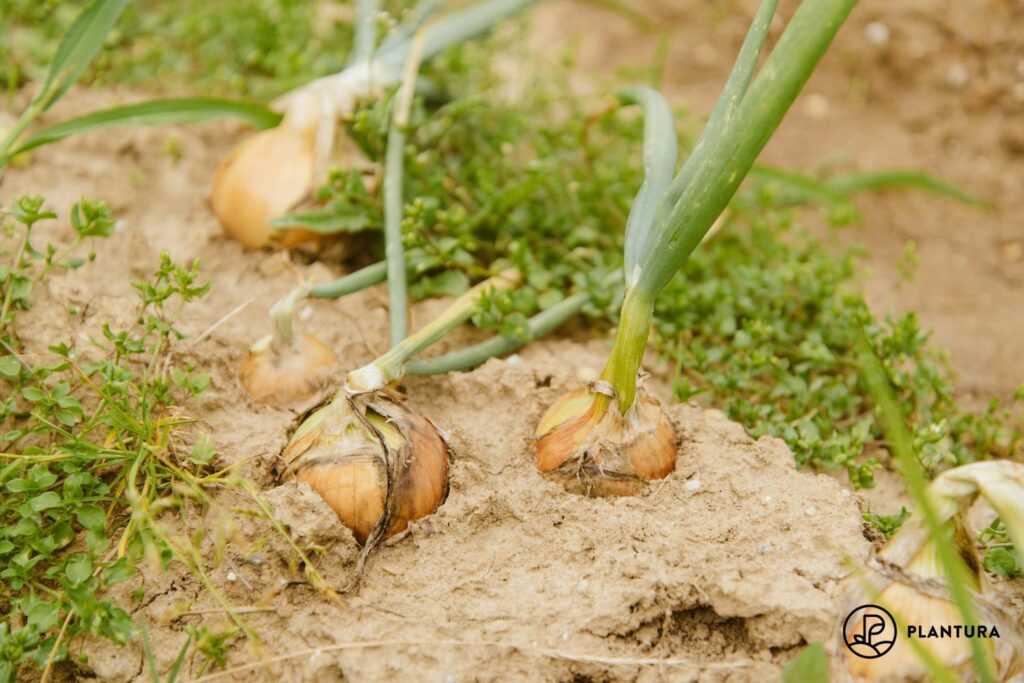
If the soil test indicates a nutrient deficiency, apply a balanced fertilizer with a higher phosphorus content, such as a 10-10-10 or 5-10-10 blend. Follow the manufacturer’s instructions for the recommended application rate.
7. Water the soil:
Before planting, thoroughly water the soil to ensure it is evenly moist. This will help the onion seedlings establish quickly and encourage root development.
8. Create furrows or raised beds:
For Exibishen onion seedlings, create furrows or raised beds in the prepared soil. The furrows should be about 1 inch deep and spaced around 12 inches apart to provide enough room for the developing bulbs.
9. Space the seedlings:
Carefully plant the Exibishen onion seedlings in the furrows, spacing them about 4-6 inches apart. This will allow sufficient room for the bulbs to grow and prevent overcrowding, which can lead to smaller-sized onions.
By following these steps to prepare the soil, you will create an optimal growing environment for your Exibishen onion seedlings. This will increase the chances of a successful harvest with healthy and flavorful onions.
Choosing the Right Location

When planting Exibishen onion seedlings, choosing the right location is essential for their growth and development. Here are some tips to help you select the perfect spot:
- Sun Exposure: Exibishen onions thrive in full sun, so choose a location that receives at least six hours of direct sunlight per day. Avoid areas with excessive shade as it can hinder their growth and bulb formation.
- Soil Type: The soil should be well-draining and rich in organic matter. Avoid heavy clay soils that can become waterlogged and cause rotting of the onion bulbs. Sandy loam or loamy soils are ideal for Exibishen onions.
- Soil pH: Exibishen onions prefer slightly acidic to neutral soil with a pH between 6.0 and 7.0. Test the soil pH and make necessary amendments to adjust it if needed.
- Air Circulation: Good air circulation is crucial for preventing diseases and promoting healthy foliage growth. Avoid planting Exibishen onions in areas with limited air movement, such as close to walls or in narrow spaces.
- Proximity to Other Plants: Exibishen onions should be planted away from other plants, especially those in the Allium family (such as garlic and chives), as they are susceptible to similar diseases and pests. Give them ample space to grow and avoid overcrowding.
By choosing the right location for your Exibishen onion seedlings, you will provide them with optimal growing conditions and set them up for success.
Timing
- Plant Exibishen onion seedlings in the ground in early spring, after the risk of frost has passed. The soil temperature should be above 40°F (4°C) for optimal growth.
- Onions typically take around 100-120 days from planting to harvest, so it’s important to time the planting correctly.
- You can start Exibishen onion seeds indoors 8-12 weeks before the last frost date in your area. This will give the seedlings enough time to grow and develop before being transplanted outdoors.
- Transplant the onion seedlings into the ground when they are about 6-8 inches tall and have developed a strong root system. This is usually around 4-6 weeks after starting them indoors.
Note: It’s important to plant Exibishen onion seedlings at the right time to ensure they have enough time to mature before the end of the growing season. Late planting may result in smaller onion bulbs or failure to form bulbs at all.
Preparing the Seedlings
Before planting your Exhibition onion seedlings in the ground, it is important to prepare them properly to ensure their successful growth. Here are a few tips on how to prepare your seedlings:
- Choose healthy seedlings: Select seedlings that are strong, with green leaves and a well-developed root system. Avoid seedlings that are leggy or have discolored leaves.
- Harden off the seedlings: If the seedlings have been grown indoors or in a greenhouse, it is important to gradually expose them to outdoor conditions before planting. This process, known as hardening off, helps the seedlings adjust to changes in temperature, wind, and sunlight. Place the seedlings outside for a few hours each day, gradually increasing the duration over the course of a week.
- Prepare the planting area: Choose a well-draining site with full sun exposure for your onion seedlings. Remove any weeds or debris from the planting area and loosen the soil to a depth of at least 8 inches.
- Amend the soil: Onions prefer a slightly acidic soil with a pH level between 6.0 and 6.8. Test the soil and make any necessary amendments to achieve the desired pH level. Add organic matter such as compost or well-rotted manure to improve soil fertility and drainage.
- Space the seedlings: Determine the spacing requirements for your particular variety of Exhibition onions. On average, onions should be spaced about 4-6 inches apart in rows that are 12-18 inches apart. Use a ruler or measuring tape to ensure accurate spacing.
- Plant the seedlings: Dig small holes in the prepared soil, deep enough to accommodate the root system of each seedling. Gently place the seedlings into the holes, making sure the roots are spread out. Cover the roots with soil, leaving the top of the bulb exposed.
- Water thoroughly: After planting, water the seedlings thoroughly to settle the soil around the roots. Avoid overwatering, as onions are susceptible to rot in waterlogged soil. Monitor the moisture levels and water as needed throughout the growing season.
By following these preparation tips, you can give your Exhibition onion seedlings the best start for healthy growth in the ground.
Planting Method
Step 1: Prepare the soil by removing any weeds, rocks, or debris. Break up the soil with a garden fork or tiller to a depth of at least 6 inches.
Step 2: Add compost or well-rotted manure to the soil to improve its fertility and drainage. Mix it into the soil thoroughly.
Step 3: Create furrows or rows in the soil using a garden hoe or your hands. The furrows should be approximately 1 inch deep and spaced around 12 inches apart.
Step 4: Carefully remove the Exibishen onion seedlings from their pots or trays. Gently separate the seedlings, being careful not to damage their delicate roots.
Step 5: Place the seedlings in the furrows, spacing them approximately 4 inches apart. Make sure the roots are well spread out and not bunched up.
Step 6: Once all the seedlings are in place, gently push the soil back into the furrows to cover the roots. Firm the soil gently around the seedlings to ensure they are secure.
Step 7: Water the newly planted seedlings thoroughly to help settle the soil and provide moisture to the roots. Avoid overwatering, as it can lead to rotting.
Step 8: Mulch the area around the seedlings with a layer of straw or wood chips. This will help suppress weeds, retain moisture, and regulate soil temperature.
Step 9: Regularly water the seedlings, keeping the soil consistently moist but not waterlogged. Onions have shallow roots, so frequent but light watering is preferable.
Step 10: As the seedlings grow, consider thinning them out to provide more space for the remaining plants. This will allow for better air circulation and reduce competition for nutrients.
Step 11: Fertilize the seedlings every 3-4 weeks with a balanced fertilizer to promote healthy growth. Follow the manufacturer’s instructions for application rates.
Step 12: Monitor the seedlings for any signs of pests or diseases, such as onion maggots or fungal infections. Treat any issues promptly to prevent spread and damage to the crop.
Step 13: Harvest the Exibishen onions when the tops begin to yellow and fall over. Carefully dig them up from the soil using a garden fork or trowel, taking care not to damage the bulbs.
Step 14: Allow the harvested onions to dry in a well-ventilated area for several weeks. Once dry, trim the tops and store the onions in a cool, dry place for long-term storage.
Spacing
Proper spacing is essential for the healthy growth of Exibishen onion seedlings. Follow these guidelines to ensure optimal spacing:
- Plant the seedlings at a distance of 6-8 inches apart in rows.
- Leave a gap of about 12 inches between each row to allow for easy watering and weeding.
- Ensure that the soil is well-drained to prevent waterlogging and promote air circulation around the plants.
- Consider using a spacing guide or measuring tool to ensure consistency in the distance between each seedling.
- Thinning may be necessary if the seedlings are initially planted too close together. Thin them out to maintain the recommended spacing.
By providing adequate spacing, you allow each Exibishen onion seedling to access sufficient sunlight, water, and nutrients for healthy growth. This helps to reduce competition between the plants and minimize the risk of diseases.
Watering and Mulching
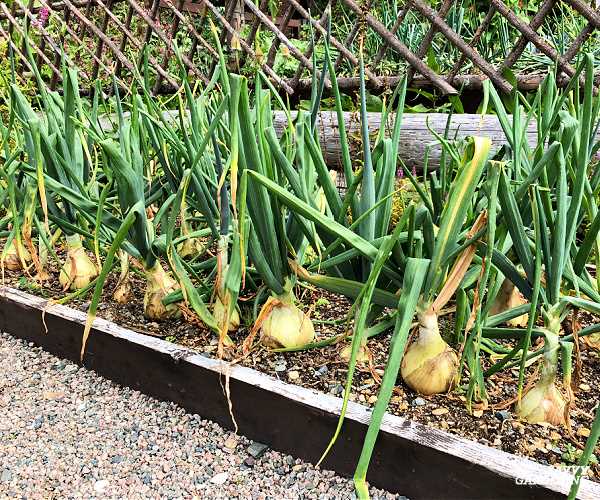
Watering is an important aspect of caring for Exibishen onion seedlings. These seedlings require consistent moisture to thrive and grow properly. Here are some tips for watering Exibishen onion seedlings:
- Water the seedlings regularly, especially during dry periods. Onions need at least 1 inch of water per week.
- Avoid overwatering, as it can lead to rotting of the roots. Make sure the soil drains well and doesn’t become waterlogged.
- Water the plants deeply, allowing the water to reach the root zone. This encourages the roots to grow deep into the soil.
- Water in the early morning or late evening to minimize water evaporation and ensure the seedlings have enough time to dry before nightfall.
- Use a watering can or a gentle hose attachment to apply water directly to the base of the plants, avoiding wetting the foliage. This helps prevent diseases like fungal infections.
Mulching is another important practice for growing Exibishen onion seedlings. Here’s how you can mulch your seedlings:
- Apply a 2-3 inch layer of organic mulch around the base of the plants, leaving a small gap around the stem to prevent rotting.
- The mulch helps conserve moisture in the soil, reduces weed growth, and regulates soil temperature.
- Good mulch options for Exibishen onion seedlings include straw, compost, or chopped leaves.
- Make sure to replenish the mulch layer as needed throughout the growing season to maintain its effectiveness.
By following these watering and mulching tips, you can ensure that your Exibishen onion seedlings have the right amount of moisture and protection to grow into healthy and productive plants.
Aftercare and Maintenance
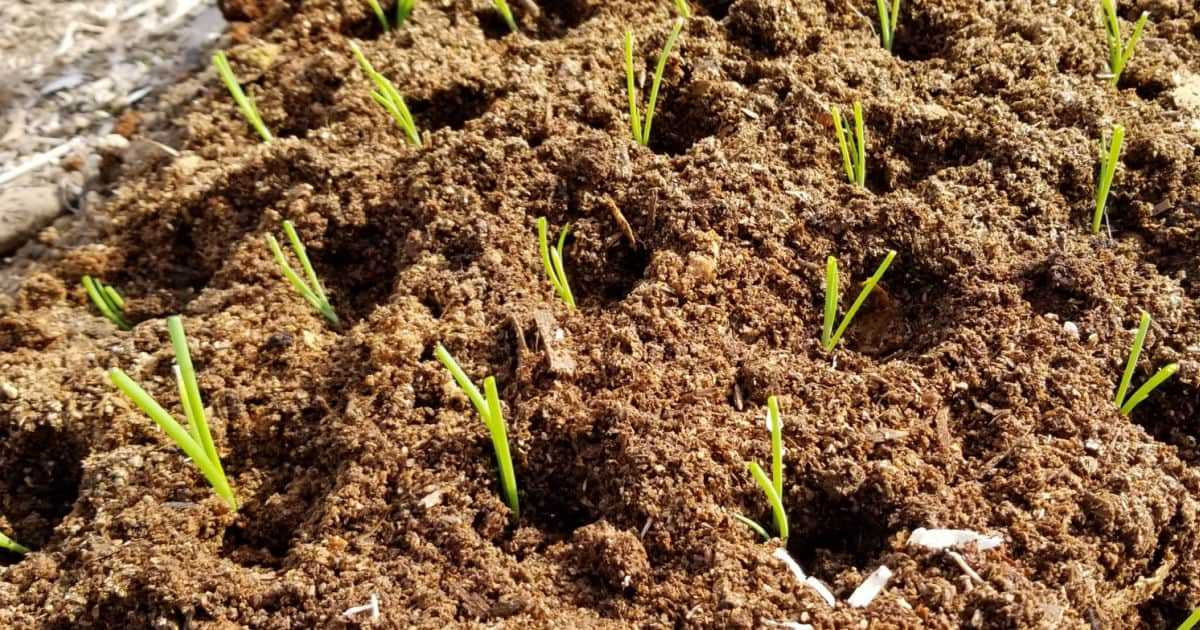
- Watering: Exibishen onion seedlings require regular and consistent watering. Keep the soil moist but not waterlogged, as excessive moisture can lead to rotting of the bulbs. Water deeply once or twice a week, especially during dry periods.
- Weeding: Regularly remove weeds from the planting area to prevent competition for nutrients and space. Use a hoe or hand-pull weeds, being careful not to disturb the onion seedlings.
- Mulching: Apply a layer of organic mulch around the base of the onion plants to help conserve moisture, suppress weed growth, and regulate soil temperature.
- Supporting: As the onion plants grow, they may need support to prevent them from bending or falling over. Use stakes or hoops to prop up the plants and keep them upright.
- Fertilizing: Onions benefit from regular fertilization to support healthy growth. Apply a balanced fertilizer according to the package instructions, typically every 4-6 weeks. Avoid over-fertilization, as this can lead to lush green foliage but small bulbs.
- Pest and Disease Control: Monitor the onion plants for pests such as onion flies, thrips, and onion maggots. Use organic or chemical pest control methods as needed. Keep an eye out for common onion diseases like onion rot and downy mildew, and take appropriate measures for prevention and treatment.
- Harvesting: Harvest the Exibishen onions when the tops start to die back and turn yellow. Carefully lift the bulbs from the ground using a garden fork or trowel. Allow the harvested onions to dry in a well-ventilated area for several weeks before storing them.
- Storage: Store the harvested onions in a cool, dry, and well-ventilated place. Remove any damaged or rotting bulbs to prevent the spread of disease. Proper storage conditions can extend the shelf life of the onions.
“Question-Answer”
When is the best time to plant Exibishen onion seedlings in the ground?
The best time to plant Exibishen onion seedlings in the ground is usually in early spring, after the danger of frost has passed and the soil temperatures have warmed up.
What kind of soil is best for planting Exibishen onion seedlings?
Exibishen onion seedlings prefer well-drained soil that is rich in organic matter. A sandy loam soil is ideal for growing onions as it allows for good root development and prevents waterlogging.
How deep should I plant the Exibishen onion seedlings?
When planting Exibishen onion seedlings, you should aim to plant them around 1-2 inches deep. This will help to protect the roots and promote strong growth.
How much water do Exibishen onion seedlings need?
Exibishen onion seedlings require regular watering to ensure they have enough moisture for optimal growth. On average, they need around 1 inch of water per week, either from rainfall or irrigation.
How far apart should I space the Exibishen onion seedlings?
Exibishen onion seedlings need to be spaced around 6-8 inches apart to allow for proper bulb development. This spacing also helps to ensure good air circulation between the plants, reducing the risk of disease.







